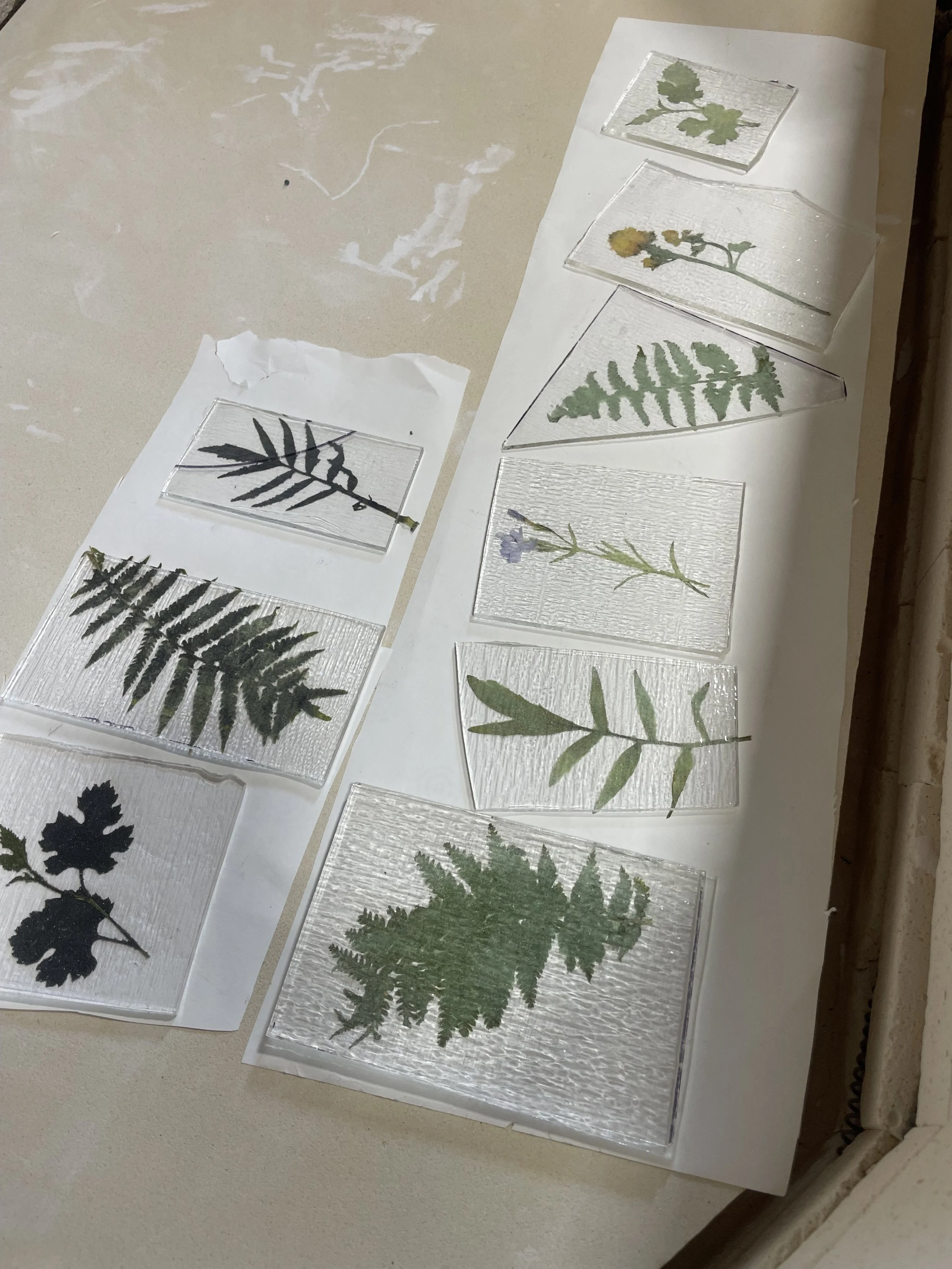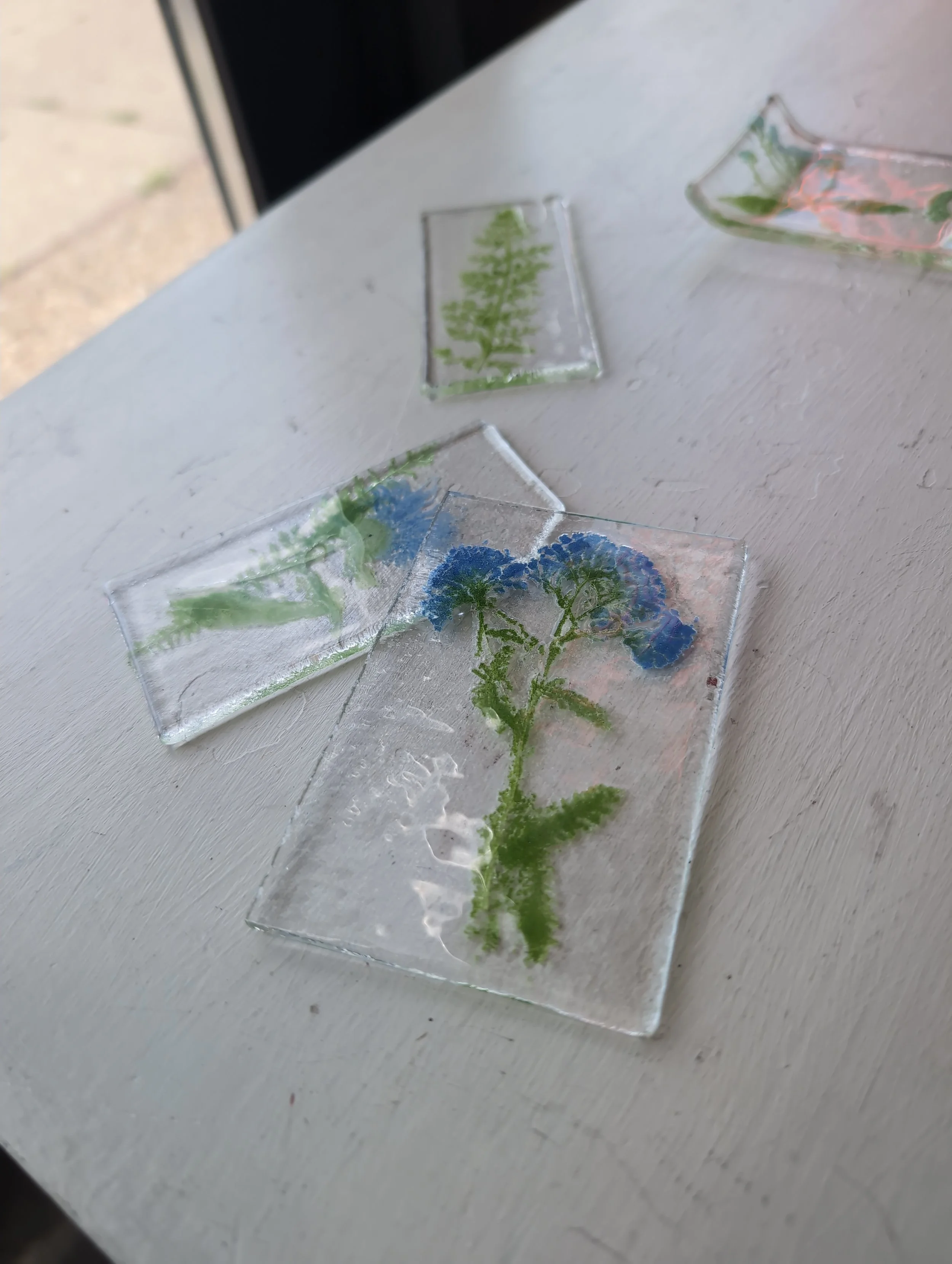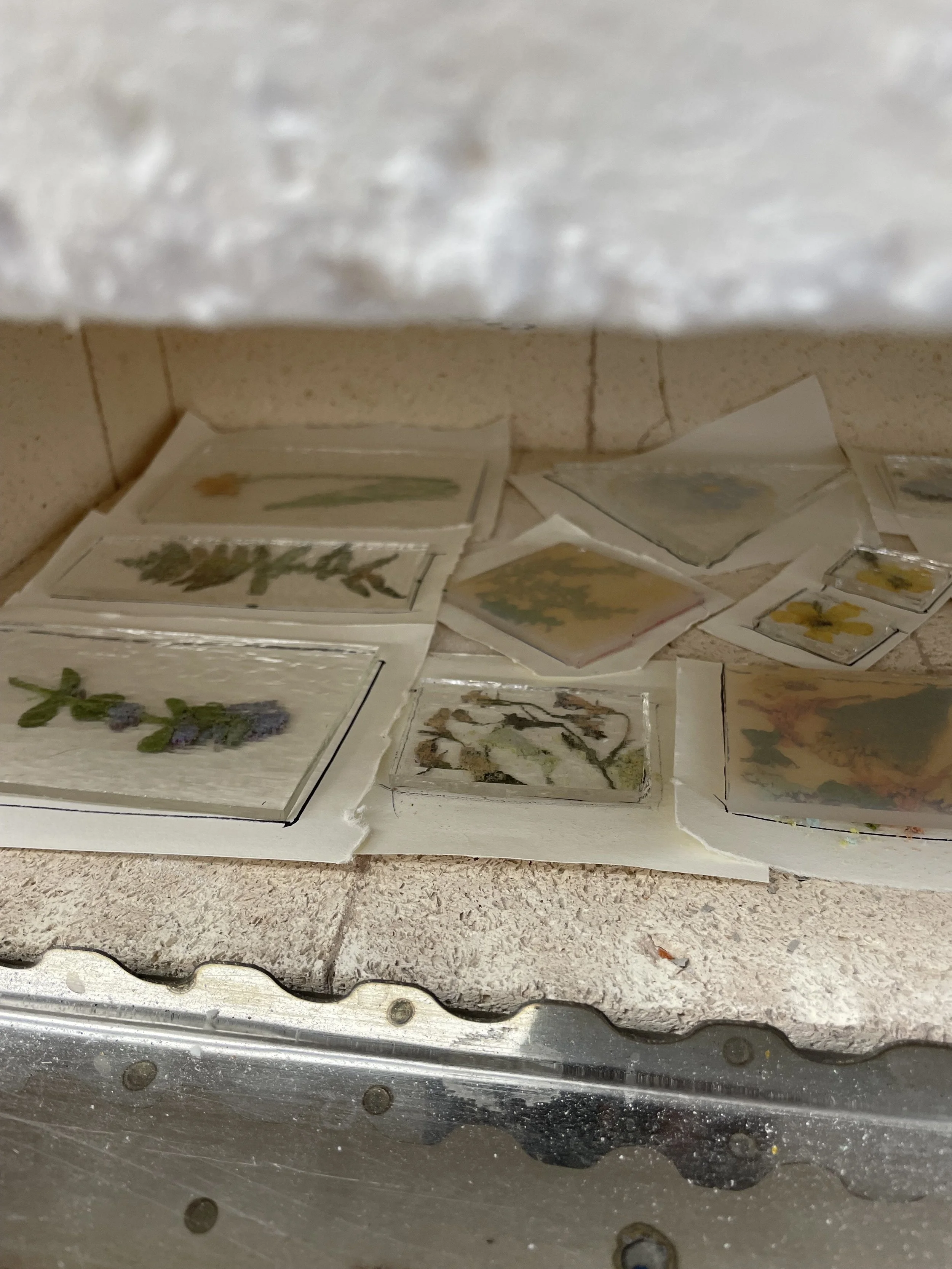Emma Wood Fuses Botany with Kiln-Formed Glass
Student work rests on a table after being removed from the kiln after this summer’s “Forage and Fuse” course.
Citizen scientist and glass artist Emma Wood first became involved with CAFAC in the winter of 2024 as one of two studio residents. Their residency experience culminated in a shared exhibit with fellow flameworker Emily McBride, which contrasted Emma’s realistic depictions of mushrooms with Emily’s geometric grids and prisms.
This summer, they taught a kiln-formed glass workshop that again drew on nature in “Forage and Fuse,” where students brought their own plant material to use in small glass dishes and suncatchers, which preserve the flowers, leaves, and roots permanently.
Emma’s no stranger to teaching, but teaching this class meant stepping into a new role at CAFAC. Recently, they sat down with CAFAC staff to reflect on the experience; read on to learn about Emma’s inspiration, their past experiences teaching, and hopes for the future of their arts career!
CAFAC: Tell us about “Forage and Fuse” - where did the idea come from? Have you used these techniques in your own artwork before?
Emma Wood: This July I taught “Forage and Fuse: Fossilized Plants in Glass” class at CAFAC for the first time. This workshop stems from my own practice using a combination of biomaterial and glass, basically printing plant matter to glass using powders in a kiln. The technique has been around in kiln forming circles for a while but I started working with it in 2022. I am fascinated by the fine line that glass and science share and how you can fossilize a fleeting moment in time.
I previously taught this class with The American Swedish Institute. This class accompanied my participation in ASI’s “Fluidity: Swedish Identity in Glass exhibition in 2023. Where my sculpture “Seven Flowers” was commissioned for the exhibition, which was a glass blown pillow that held seven fossilized glass flowers inside. The flower was specific and represented places I felt the most queer/trans joy. I wanted to share this process with people who were curious by the way the flowers imprinted the glass in the form of a workshop.
C: Was there anything that surprised you about how students approached the class?
E: This time teaching at CAFAC, I really enjoyed seeing the collection of flowers and even insect wings that students brought for the workshop. Some were foraged from a recent trip, others had picked from their gardens or they had significant meaning behind the flowers. Some flowers were easier to work with than others, for example thinner petals became quite delicate when adding glass powder. We all learned together being in a new studio space and it was exciting to see how the flowers turned out the next day.
C: Do you have any plans for future versions of this class and involvement at CAFAC?
E: In the I envision expanding the class by adding more collaborative elements such as foraging together, and cross-pollinating with different fire arts studios.
I’ve had a great appreciation for CAFAC’s programing structure and the way they center community and access in their classes for both students and instructors. I look forward to teaching more kiln formed glass classes at CAFAC again in the summer.
Two large pieces of glass with plants trapped inside sit in a kiln.
A range of pieces of glass with leaves, and flowers rest on a white bench.
Ten different pieces of glass with encased plants sit in a kiln.




